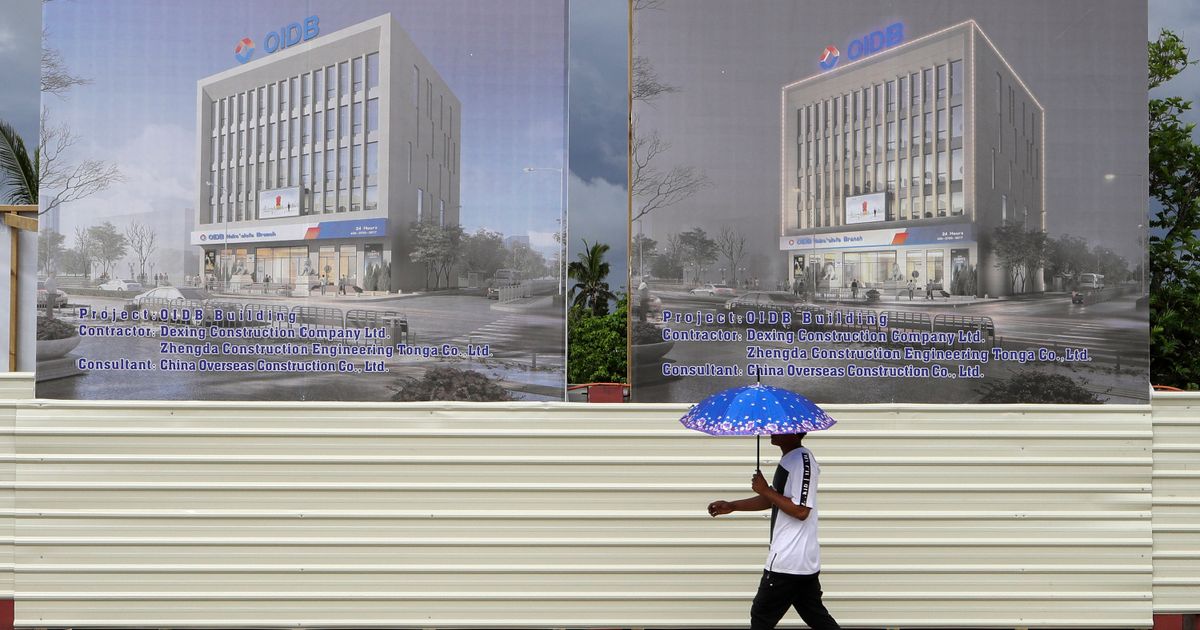Drought forces earliest ever harvest in French wine region

Laurent Lebrun, director of the Château Olivier estate, walks through the vineyards to taste grapes from different regions and decide when the harvest is needed, in Léognan, south of Bordeaux, in southwestern France, Monday August 22 2022. The consequences of global warming have become part of everyday life for winemakers, Lebrun said, noting the rapidity of change. (AP Photo/Francois Mori)
PA
BORDEAUX, France
The landscape in the prestigious vineyards of Bordeaux is the same as ever, with healthy, ripe grapes hanging heavily from the rows of green vines.
But this year, something is radically different in one of France’s most famous wine regions and in other parts of Europe. The harvest that once started in mid-September is now happening earlier than ever – in mid-August – due to severe drought and the wine industry adapting to the unpredictable effects of climate change.
Paradoxically, the season of heat waves and forest fires produced excellent grapes, despite lower yields. But achieving such a harvest required creative changes in cultivation techniques, including pruning the vines in a different way and sometimes watering them in places where irrigation is generally prohibited. And growers across Europe who have seen first-hand the effects of global warming are worried about what is to come.
So far, “global warming is very positive. We have a better maturity, a better balance. … But if you look to the future, and if you increase the temperature by one more degree, in addition , you will lose the part of freshness in the balance of the wine,” said Fabien Teitgen, technical director of Château Smith-Haut-Lafitte, an estate that grows organic wine grapes in Martillac, south of Bordeaux.
Winegrowers have adjusted their practices amid a series of heat waves, combined with a lack of rain, that have hit most of Europe. In the region of Bordeaux, in the southwest of France, giant forest fires have destroyed large areas of pine forests. It didn’t rain from late June to mid-August.
As the harvest unfolds, dozens of workers kneel in the vines to hand-pick the grapes and put them in baskets. The fruit is immediately crushed to make juice which is put in vats, then in barrels to start the elaboration of the wine.
The harvest aims to produce the white wine of the famous Pessac-Léognan appellation. Red wine will soon follow.
Eric Perrin, one of the owners of the Château Carbonnieux estate, recalled that during his childhood, in the 1970s, the harvest began around mid-September. This year they started on August 16.
But the 2022 vintage could be better than ever, Perrin said, as the grapes are healthy and well balanced. The hot, dry weather also prevented the vines from contracting diseases such as mildew.
Wine production is a centuries-old tradition at Château Carbonnieux, where Thomas Jefferson visited the vines in 1787, before becoming President of the United States, and planted a pecan tree that still stands in a park.
Nowadays, Château Carbonnieux wine is sometimes offered by President Emmanuel Macron to distinguished guests.
The drought has changed the way winemakers work.
Before, winemakers used to give the vines a shape that allowed the grapes to receive the maximum sun so that they produced more sugar, which turned into alcohol. This year, growers tended to let the leaves shield the grapes so that the shadows preserved the acidity and freshness of the fruit, Teitgen explained.
Yields may be 15-20% lower in the wider region, mainly due to smaller grapes and sunburn in specific areas, Teitgen said, but that won’t affect the quality of the wine.
In front of the 14th century tower of the Château Smith-Haut-Lafitte vineyard, Manon Lecouffe carefully watered the newly planted vines this week, an essential job.
The vines are several years old and have deep roots that allow them to draw water from deep underground and withstand drought without suffering too much.
But this year, the estates were authorized to water the adult vines, a practice usually prohibited in Bordeaux.
“Some plots were suffering a lot from leaf fall,” Lecouffe said.
Another measure that winemakers can take is to reduce the density of their plots to require less water or till the soil to better retain moisture at depth.
Experts are also wondering if planting new grape varieties could be helpful.
At Château Olivier, which also produces Pessac-Léognan wines, director Laurent Lebrun showed how he and his team roam the vines to taste the grapes plot by plot to decide where and when to harvest.
The consequences of global warming have become part of everyday life for winemakers, Lebrun said, noting the rapidity of the changes.
“We have to reprogram our own way of thinking,” he said. “There are many tools that are still within our reach, which are already in use in warmer regions.”
Further south in Europe, harvest also started weeks earlier than normal to save shriveled and burnt grapes. Production is expected to be 10-20% lower in parts of Italy, Spain and Portugal, although growers are hoping for an improvement in quality.
Italian agricultural lobby Coldiretti has pointed out that the higher cost of energy and raw materials is expected to increase costs by 35%.
Scientists have long believed that human-caused climate change is making extreme weather events more frequent. They say warmer air, warmer oceans and melting sea ice are altering the jet stream, making storms, floods, heat waves, droughts and wildfires more destructive.
As warmer winters cause vines to produce early buds, French winemakers fear frost will more often disrupt the growing season. Severe hailstorms can destroy a year’s worth of work in minutes.
At Château Carbonnieux, Perrin fears that some small producers are not resistant to change.
“Climate events since 2017 have resulted in lower harvests. Not everyone will be able to survive it, that’s for sure,” he said.
___
Associated Press reporters Alexander Turnbull and François Mori in Bordeaux, Ciaran Giles in Madrid, Spain, Colleen Barry in Milan, Italy, and Barry Hatton in Lisbon, Portugal, contributed to this report.
___
Follow all AP climate change stories at https://apnews.com/hub/climate-and-environment.




